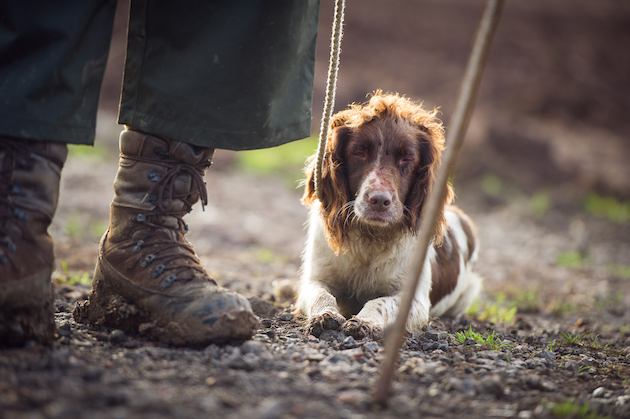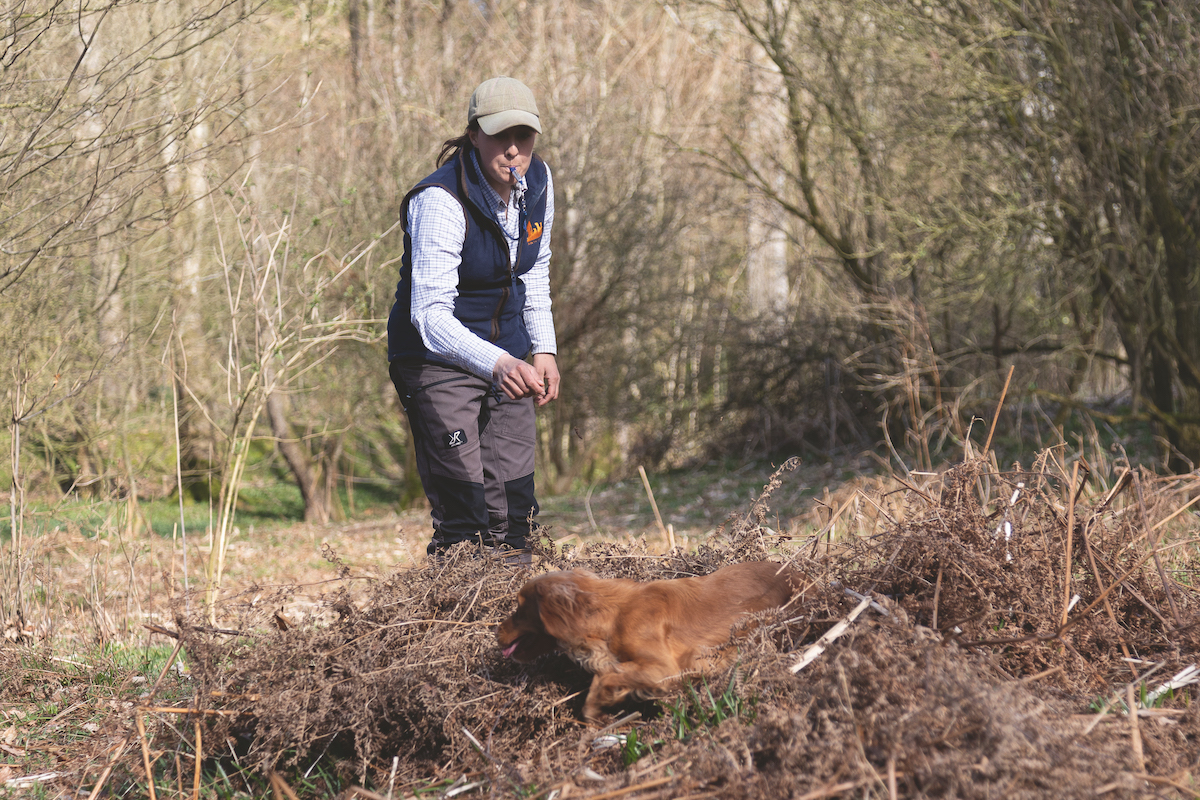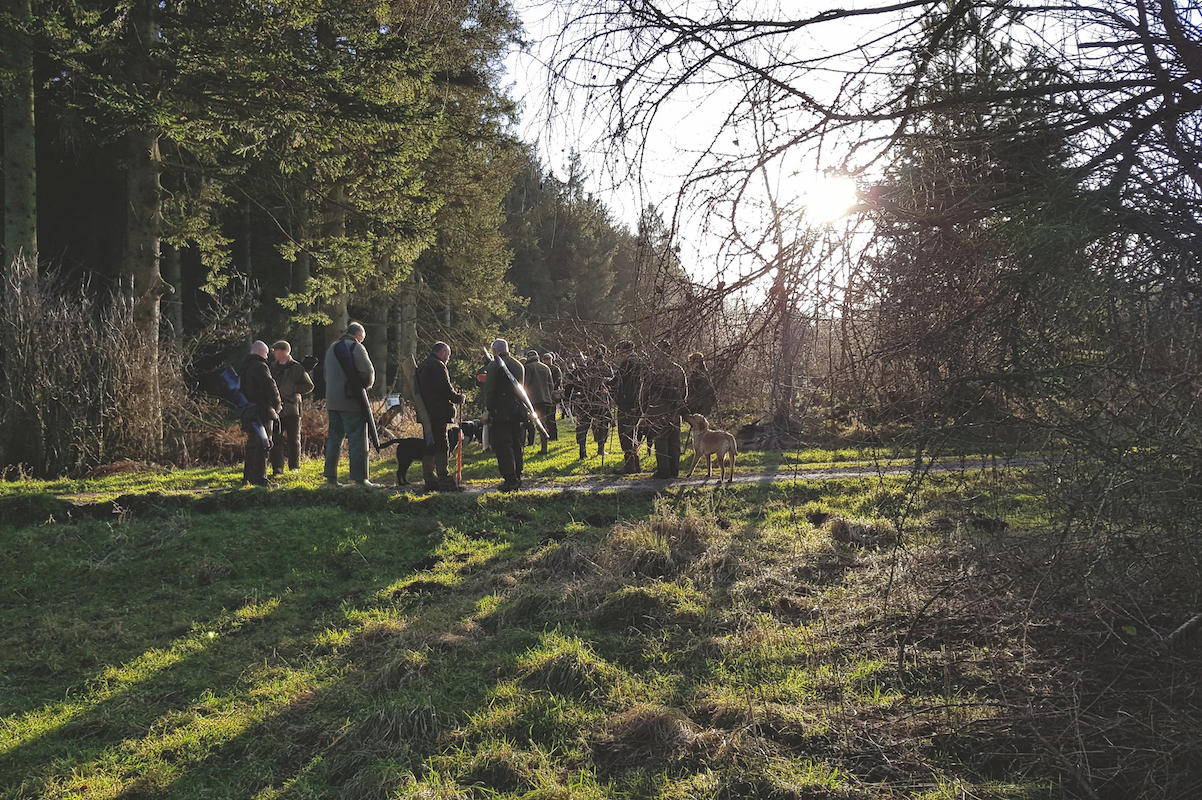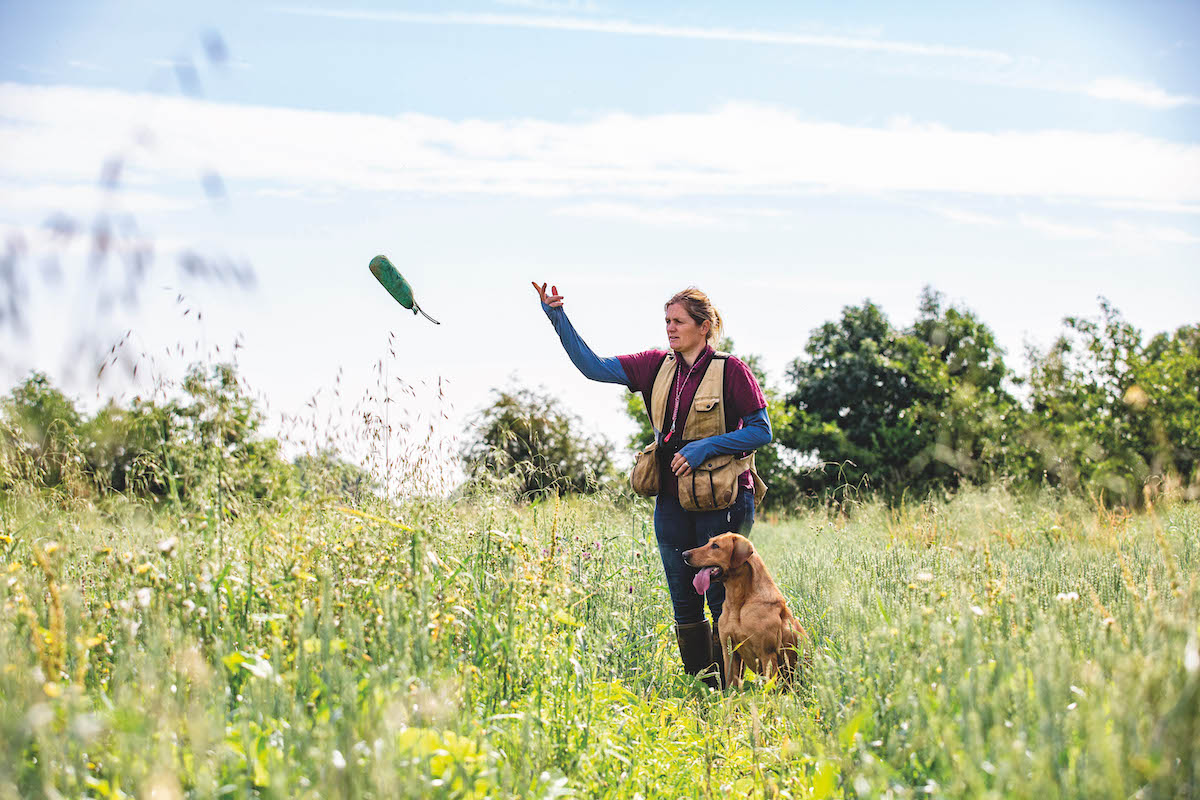Should a spaniel immediately drop when it flushes a bird? (And answers to other working spaniel queries)
Come across any of these working spaniel questions?

Sleeping cocker spaniel
Q: Should a spaniel always immediately drop when it flushes a bird?
A: It should always be steady to flush. That does not mean it has to drop or sit. Given that it should also be able to mark the bird when it has been shot, it needs to stop in a position to watch the bird fly away.
When working thick cover or in woods, the dog may need to move a little to keep the bird in sight, so stopping may not be “immediate”. The spaniel must stop of its own volition and not have to be stopped by the handler’s whistle.
Some spaniels may stand on their back legs to watch a bird away when flushing in tall cover, but, so long as there is no forward movement, steadiness to flush has been achieved.
Q: Why are spaniels trained to ‘drop to shot’ but not Labradors?
The reason spaniels are taught to drop to shot is because most of the time they will hunt around 25 yards in front of the handler. Because of this it is necessary to have the dog drop as a matter of steadiness and control. Most spaniels are also taught to drop when flushing game (see above question).
The same requirement is not needed where Labradors are concerned because this breed mostly walks to heel where it can be very easily controlled by a handler.
A spaniel working much further away from you has got a head start should it decide to play ‘deaf’ and start doing its own thing. Teaching it to drop to shot and game is simply your way of keeping control as the excitement mounts, when birds start flushing and guns start banging.
Q: I have been helping on my local shoot, dogging in birds from the boundaries. My two spaniels have started pulling forward onto scent. What can I do about it?
A: Dogging-in at the beginning of the season when the pheasants are young, naïve and plentiful allows your spaniel to get very close, resulting in lots of flushes at close range.
Unfortunately, with inexperienced spaniels, as the pheasants become older and more aware of what is happening they do not hang about and this has a knock-on effect because it causes our spaniels to pull forward trying to catch up with the game.
There are two options with this problem – if you have a few spaniels you could walk one at heel on the lead and keep swapping at short intervals. This will help with the switch on/switch off method of spaniel training. This method also helps to reduce fatigue, which in turn means your spaniel will be more responsive to whistle commands.
The second option is one of reward. Hunt your spaniel for a short spell and if you have not had a flush and feel that your spaniel is pulling on, drop a partridge or pheasant in some cover and then direct your spaniel on to the area and allow him to pick and retrieve. This helps with keeping the distance to a minimum and you in touch with your charge during spaniel training.
Q: Why is my 16-month old spaniel bitch so unsteady? I overworked her last season and I am in desperate need of some gundog training to steady her. She started very slow on the beating days but as the season progressed something clicked and she chased game all the time. What can I do to reverse this problem?
A: I would advise that you get a place booked on a professional gundog training course. The advantage of these group training days is that you meet lots of people who have experienced similar problems. You get to see how to overcome these problems ‘hands on’ and this is far better than any book or DVD.
The group sessions are usually limited to six handlers and six dogs and will generally last two to three hours at any one session. You will all get a chance to work your dog in a training pen with live game and rabbits, and spectate while others are training.
This can be beneficial, as watching someone else’s problems being sorted out can also show you where you went wrong.
Q: How can you control a dominant spaniel? At the beginning of training my gundog was submissive and easy to control. We have had her now just over five months, and during the last two months she has become a very different gundog, extremely quick at hunting and very keen to chase, will not return with retrieves and has become very dominating. What do you advise?
A: In some large training kennels if a gundog shows little promise they can get left behind at the back and become almost switched off, and therefore lose out on very valuable training time.
However, when taken out of this environment and given one-to-one training and attention as your spaniel has, it is like being given a second lease of life.
Try restricting the area in which she exercises and drill back into her the basics: sit, stay and recall. If this does not seem to be working the only way forward is to seek advice from a professional trainer.
Book a one-to-one training course where you and your gundog can both be educated at the same time.
With the problems you have mentioned, chasing of game, not returning with retrieves and becoming very dominating, you need to be very firm, and at the age of 15 months the sooner you seek professional tuition, the quicker you and your gundog will see the results.











